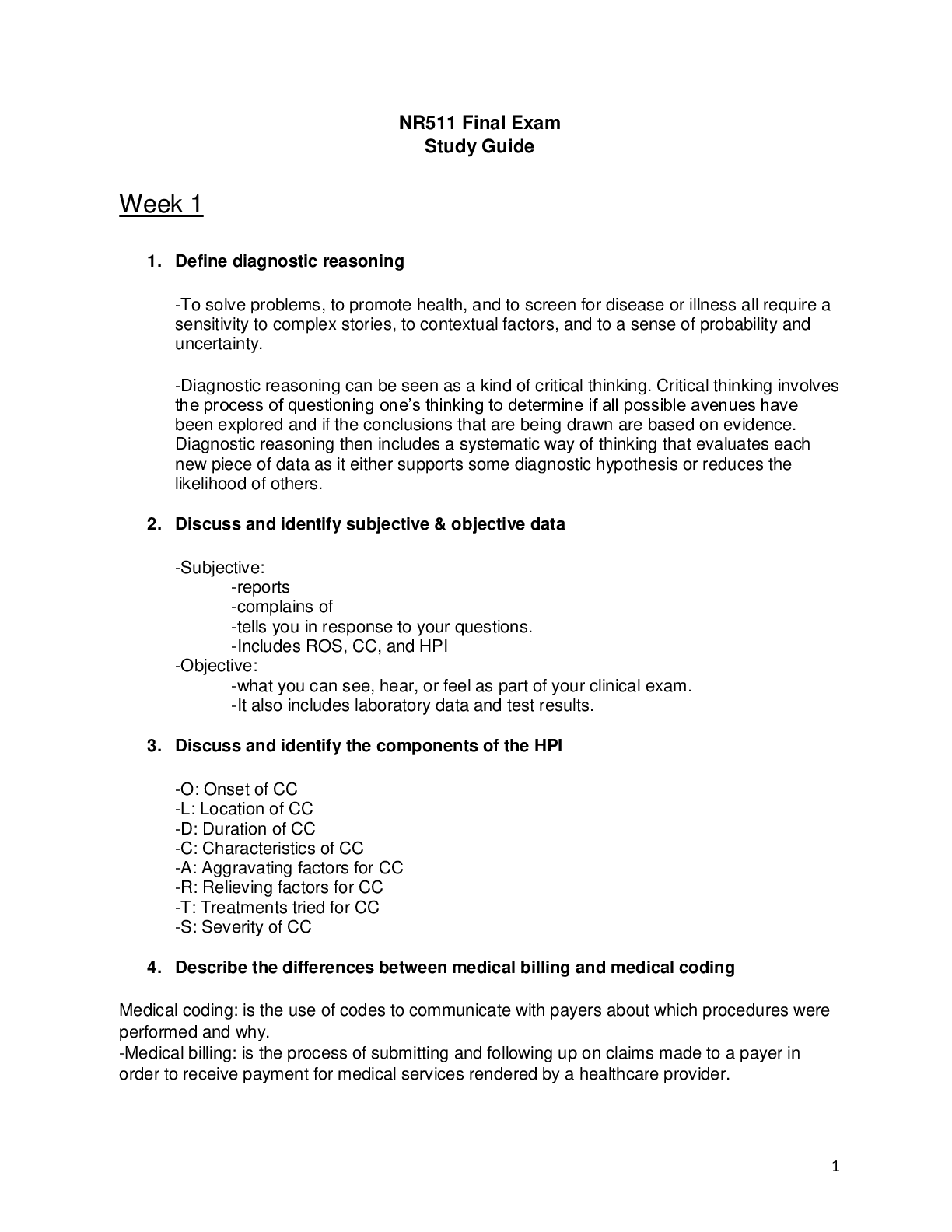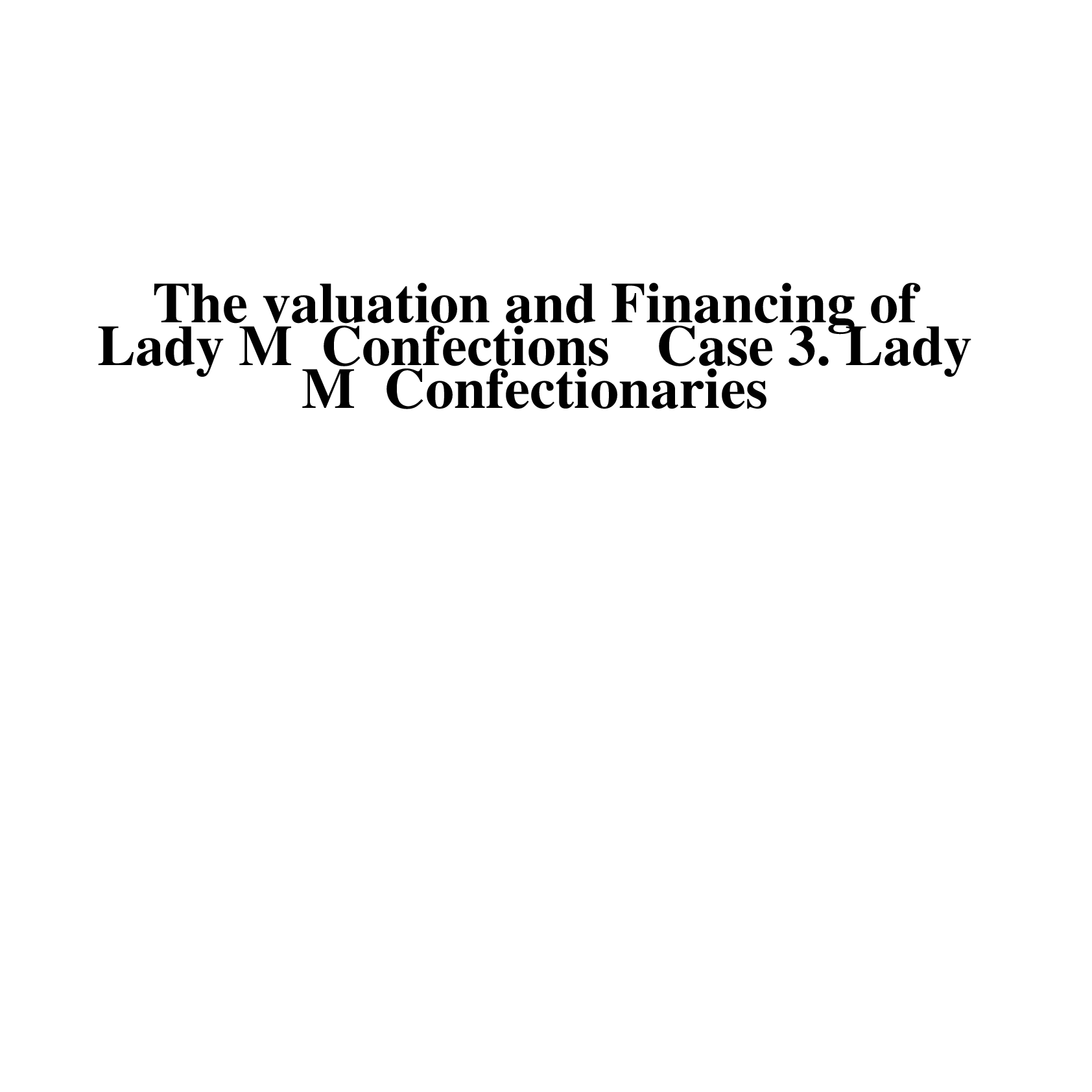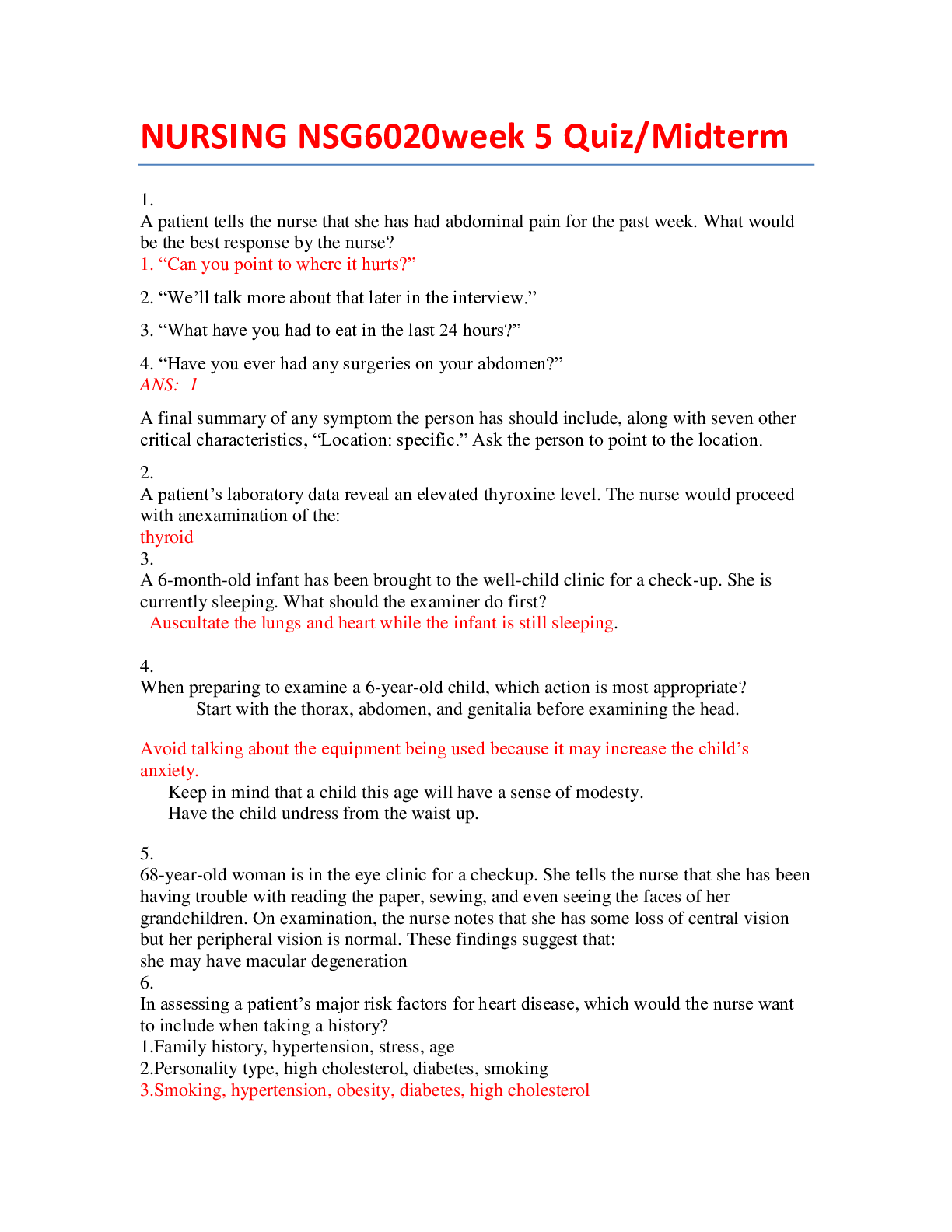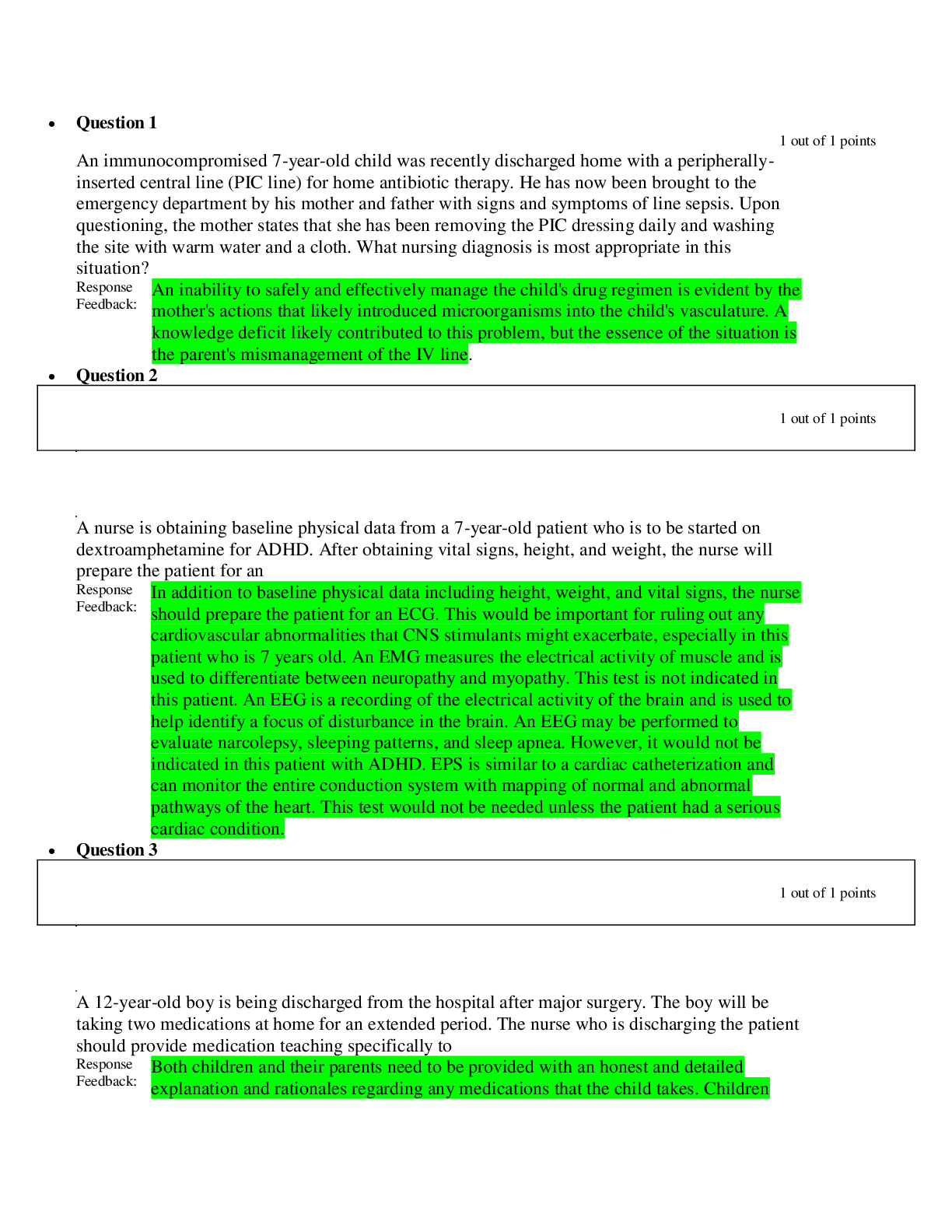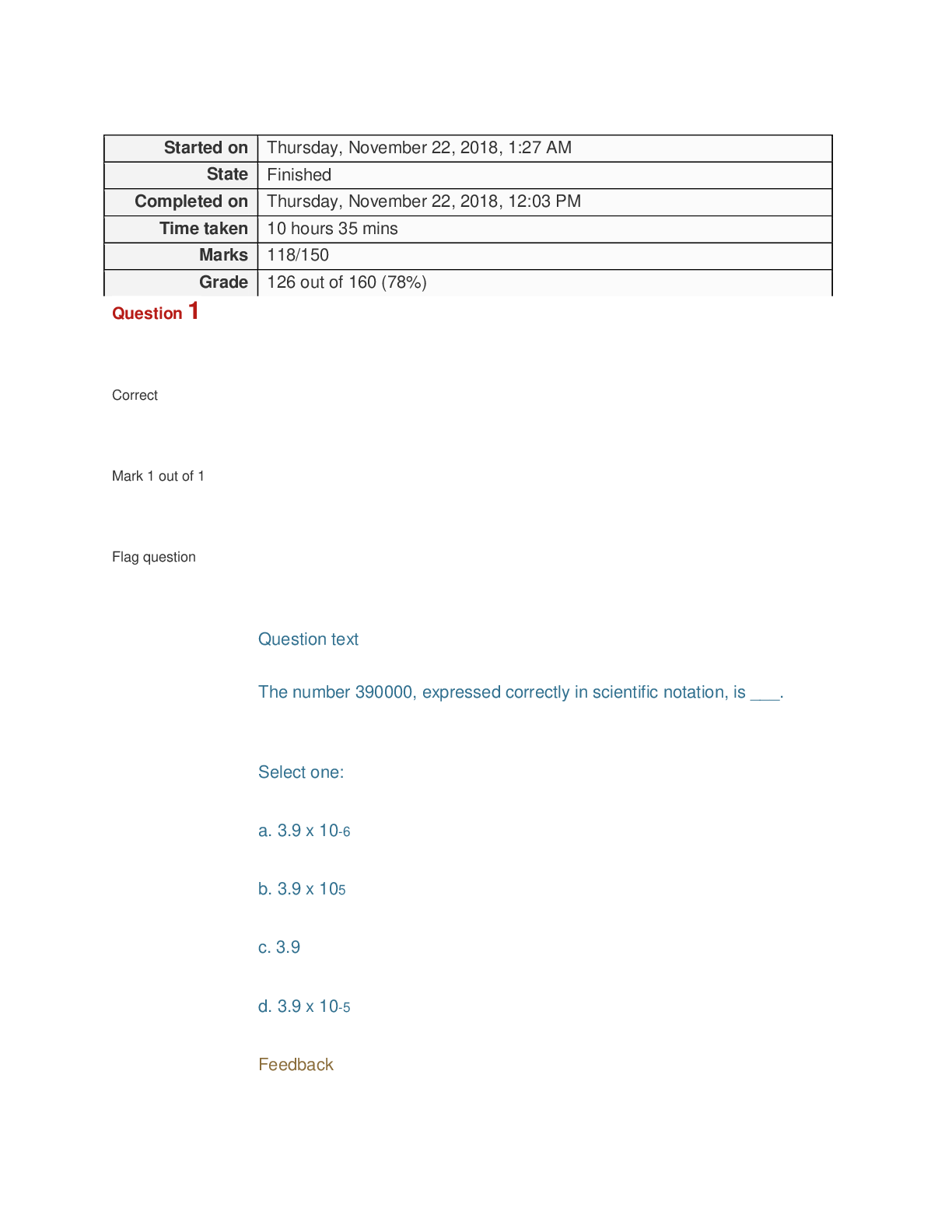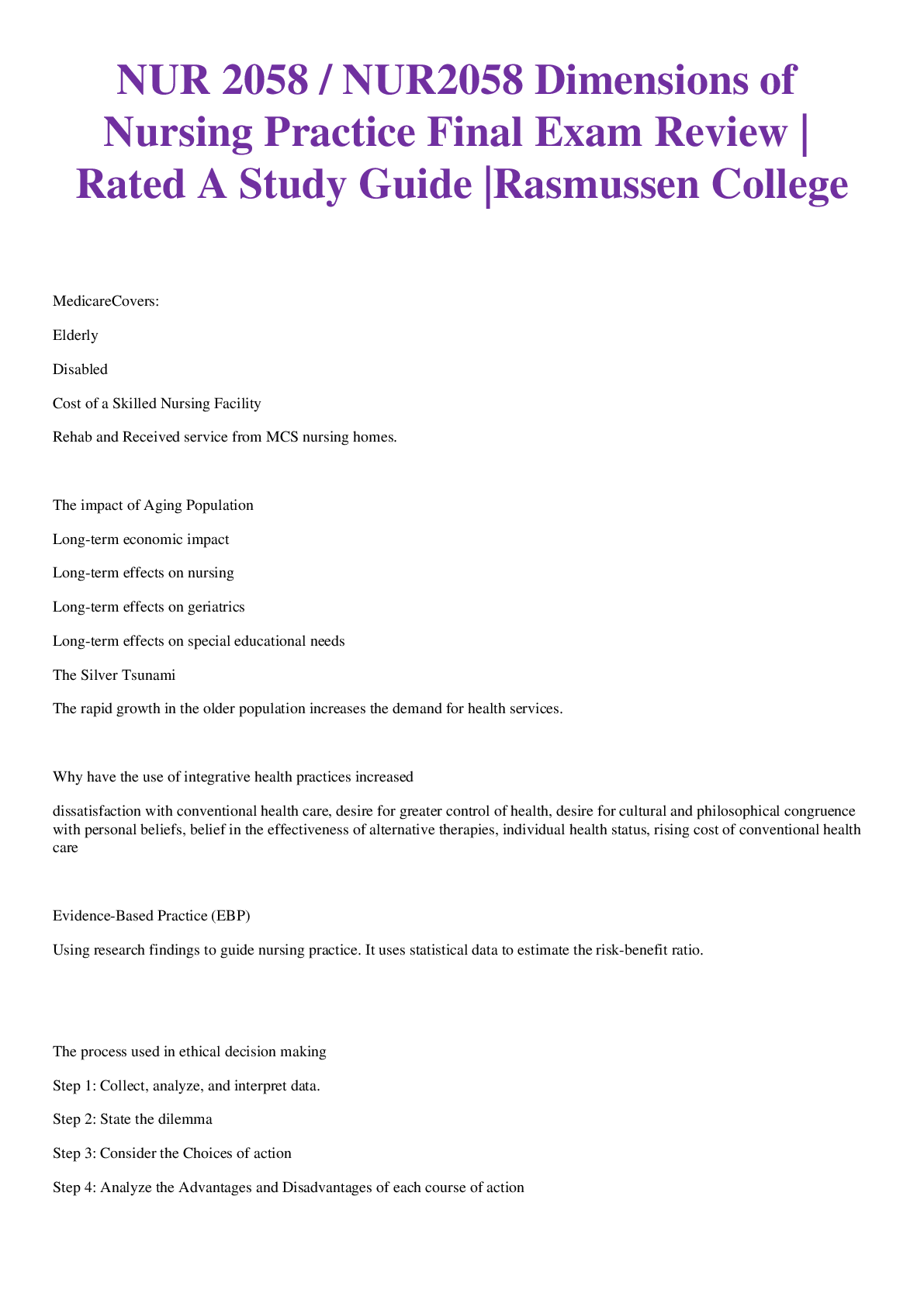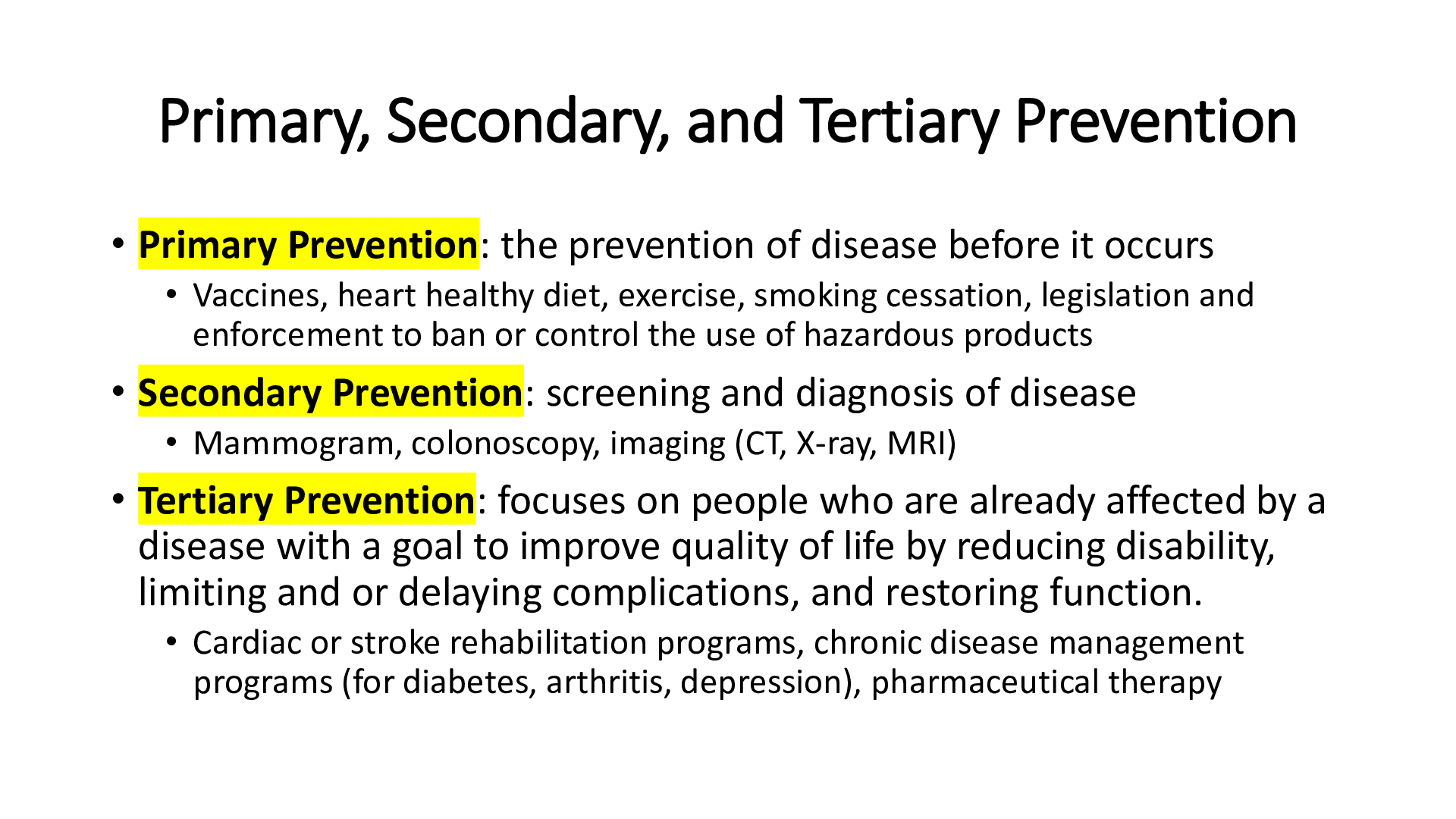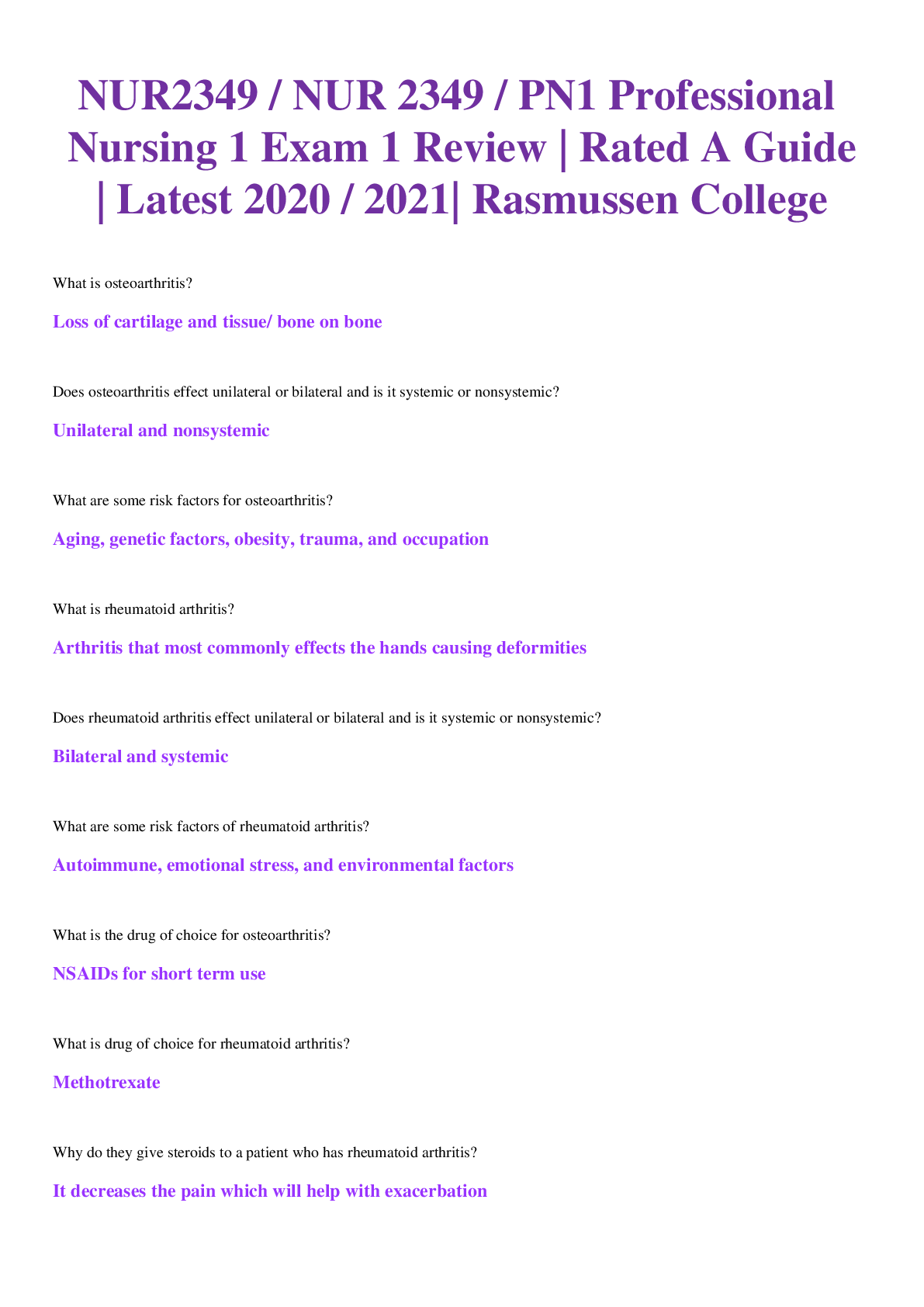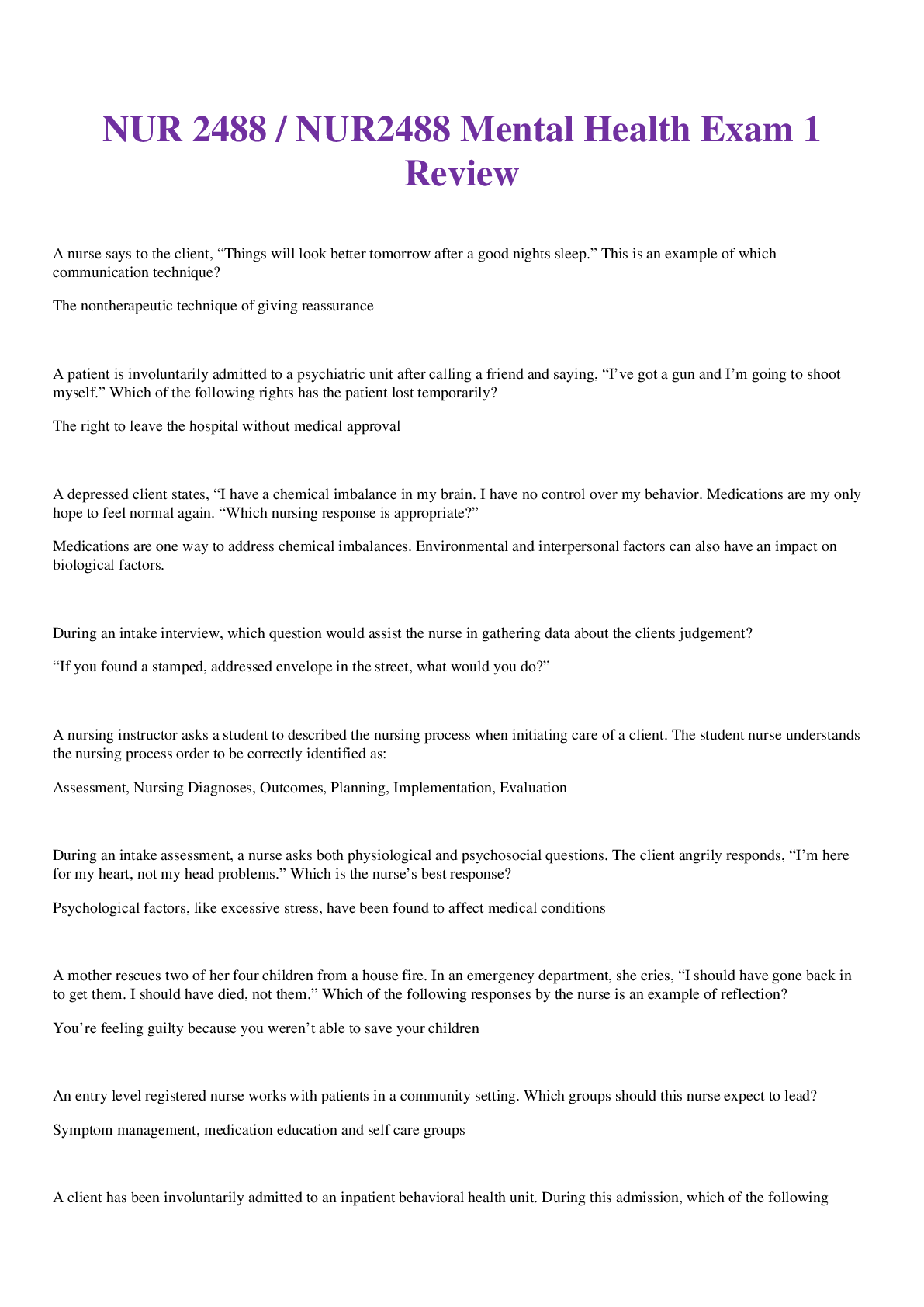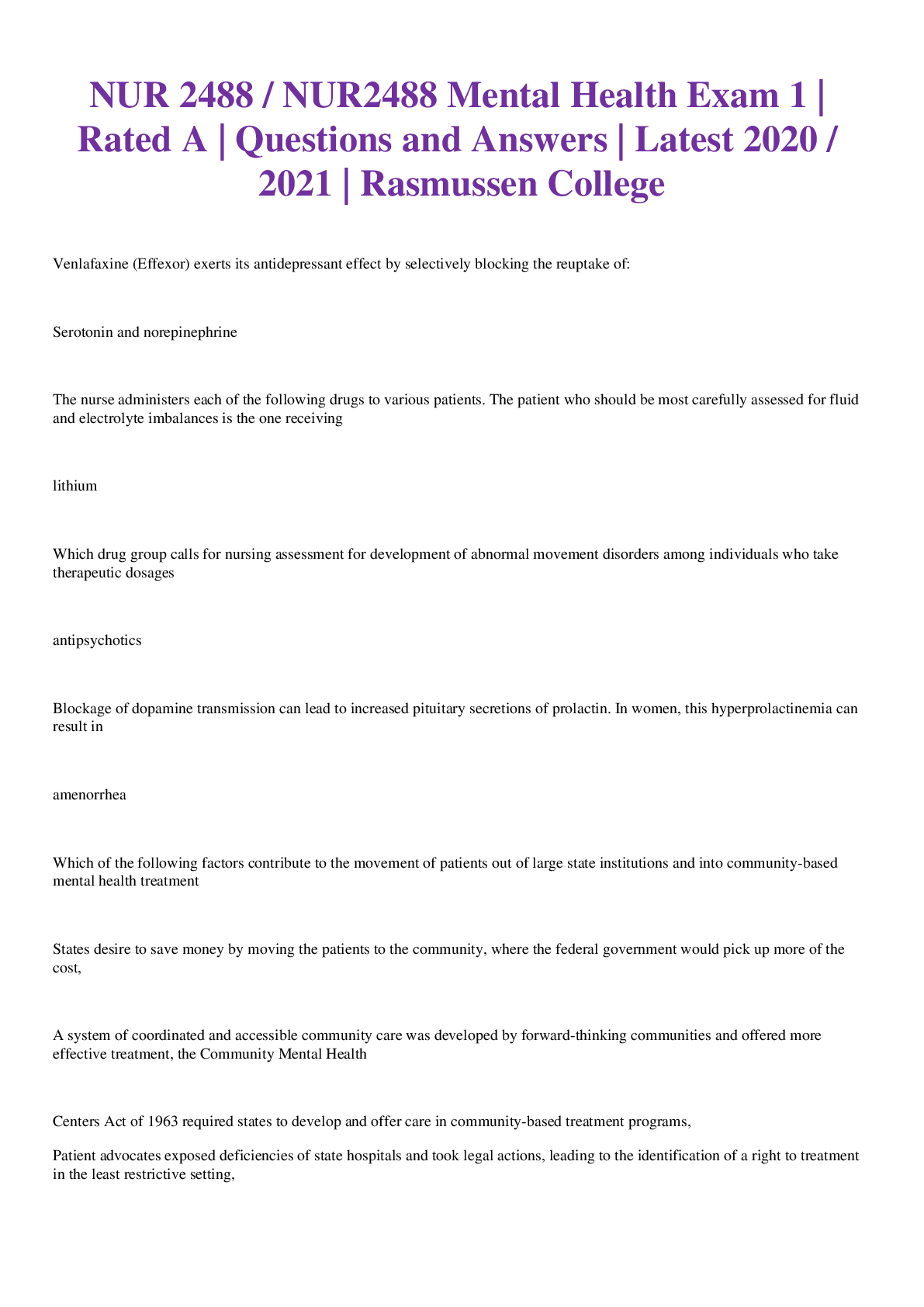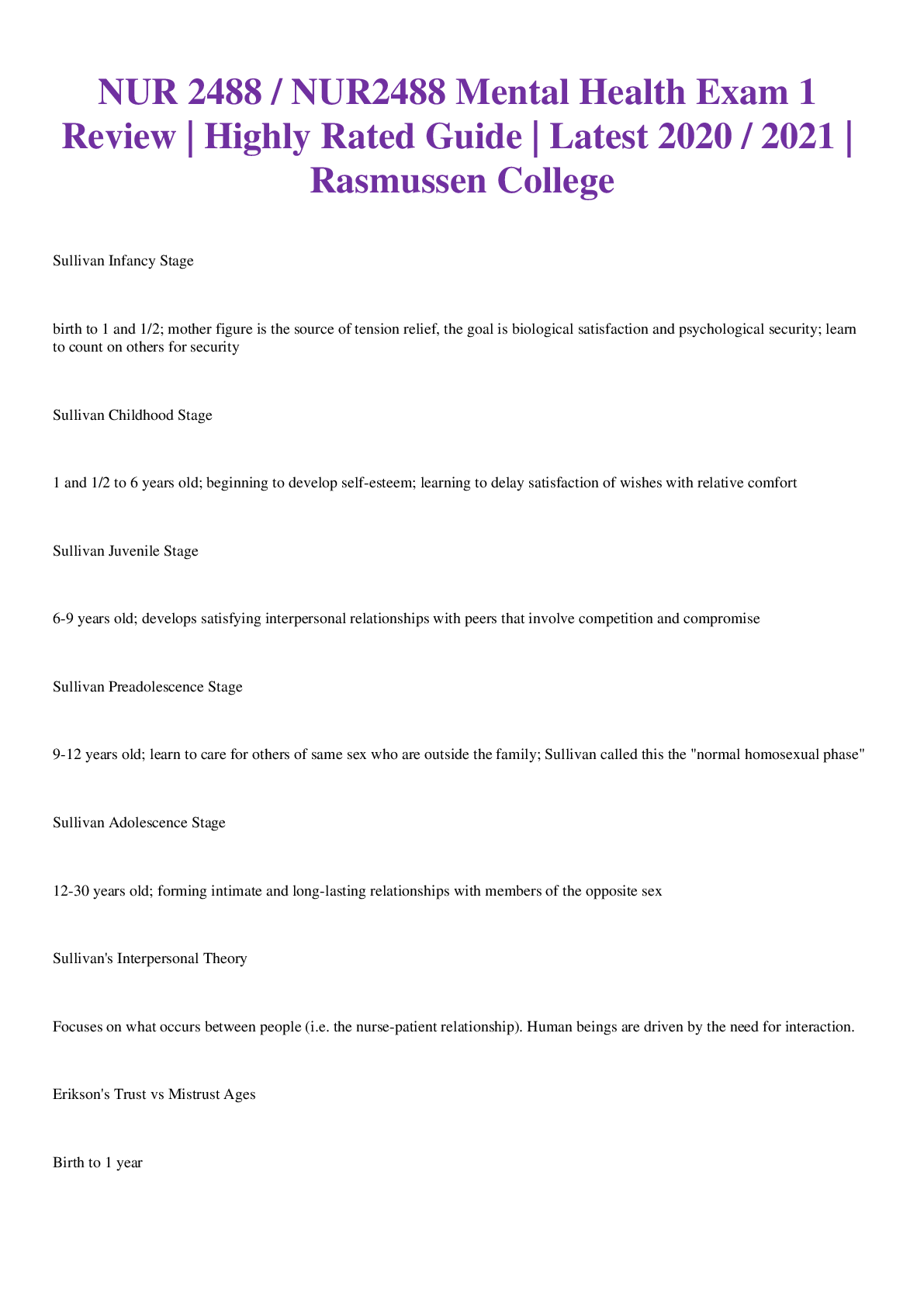Sociology > EXAM REVIEW > SOCIOLOGY 2001_Mega Quiz Bank_2019 Chapter 4 – chapter 18, Complete Multiple Choice Questions & An (All)
SOCIOLOGY 2001_Mega Quiz Bank_2019 Chapter 4 – chapter 18, Complete Multiple Choice Questions & Answers,
Document Content and Description Below
Chapter 4 Multiple Choice 1. The process by which people internalize the values, beliefs, and norms required to become functioning members of a given society is known as: a. education. b. soci alizati... on. c. dramaturgy. d. ethnomethodology. DIF: Easy REF: Page 111 TOP: Factual OBJ: Socialization 2. Sociologists view socialization as a lifelong process that begins: a. when a child can distinguish the “I” from “me.”F b. when a child is born. c. when a child is still in the womb. d. when a child internalizes the norms and values of society. DIF: Moderate REF: Page 112 TOP: Applied OBJ: Socialization 3. The story of the abused child named Anna teaches lessons about the importance of which of the following influences on human development? a. money b. proper hygiene c. human interaction d. healthy nutrition DIF: Easy REF: Pages 114–115 TOP: Applied OBJ: Socialization 4. Ultimately we hold people responsible for their behavior precisely because they can exercise choice over what they do. This speaks to the limit of socialization that sociologists refer to as: a. agency. b. cognitive development. c. deviance. d. dysfuntional socialization. DIF: Moderate REF: Pages 113–114 TOP: Applied OBJ: Agency 5. The case of Anna—who had been horribly neglected and had virtually no human contact—illustrates the fact that: a. biology is more important than the social environment in whether we become functioning members of a society. b. inadequate diet and sunshine will result in ill health if a child is not given early intimate training. c. “human nature” is the result of a complex relationship between nature (biology) and nurture (the social environment). d. lack of discipline in early childhood leads to the development of long-term physical and mental problems. DIF: Difficult REF: Pages 114–115 TOP: Conceptual OBJ: Nature versus Nurture 6. If we place nature and nurture at opposite ends on a continuum, most sociologists would fall toward the nurture end of the continuum. Which statement best explains this tendency? a. Sociologists focus on, and as a result give primary weight, to the social environment in explaining how people think, feel, and behave. b. Sociologists believe humans are born as blank slates, and that the social environment trumps nature. c. Sociologists believe that our genetic makeup really has very little to do with who we become in life. d. Sociologists believe there is a complex relationship between heredity and the environment, and that we need to give equal weight to both. DIF: Moderate REF: Pages 113–114, 140 TOP: Conceptual OBJ: Nature versus Nurture 7. Which theory uses game-playing to understand the development of self? a. Cooley’s looking-glass self theory b. Mead’s role-playing theory c. Merton’s role theory d. Goffman’s dramaturgy theory DIF: Easy REF: Pages 117–118 TOP: Factual OBJ: Theories of Socialization 8. Theories of socialization focus, in part, on how the “self” develops. According to your textbook, the “self” is: a. the individual identity of a person as perceived by that same person. b. the identity of a person as perceived by others. c. the individual’s sense of agency, action, or power. d. the conception we have of our self when we look in our “social mirror.” DIF: Moderate REF: Page 115 TOP: Factual OBJ: Looking-Glass Self Theory 9. Which theorist argued that other people essentially provide us with a “social mirror,” and that our interpretations of this mirror affect how we see ourselves? a. Erving Goffman b. Émile Durkheim c. George Herbert Mead d. Charles Horton Cooley DIF: Moderate REF: Page 115 TOP: Factual OBJ: Looking-Glass Self Theory 10. Cooley’s theory of socialization states that the self develops from our interactions with others and their reactions to us. This theory is known as: a. role-playing. b. dramaturgy. c. reflection theory. d. looking-glass self theory. DIF: Easy REF: Page 115 TOP: Factual OBJ: Looking-Glass Self Theory 11. According to Charles Horton Cooley, we develop a self-concept by: a. inheriting genetic characteristics from our parents. b. learning self-discipline. c. interpreting our feelings about ourselves. d. interpreting how others think about us. DIF: Moderate REF: Page 115 TOP: Factual OBJ: Looking-Glass Self Theory 12. In terms of how we feel about ourselves, Charles Horton Cooley would argue all of the following to be true EXCEPT: a. If we imagine others think we’re fat, even if they don’t, it will still affect the way we feel about ourselves. b. Society provides us a “mirror” in which we can observe the reactions of others to our own behavior. c. We are affected more by how people react to our behavior than by how we interpret their reactions. d. Our interpretations of how others see us are more important than the reality of how others see us. DIF: Moderate REF: Page 115 TOP: Conceptual OBJ: Looking-Glass Self Theory 13. Concepts such as I, me, and generalized other are part of which theorist’s work? a. George Herbert Mead b. Charles Horton Cooley c. Erving Goffman d. Sigmund Freud DIF: Easy REF: Pages 115–117 TOP: Factual OBJ: George Herbert Mead 14. According to George Herbert Mead’s stages of development, children learn to recognize an “other” through: a. playing informally with other people. b. imitation. c. playing formal games (like baseball). d. trial and error. DIF: Moderate REF: Page 116 TOP: Factual OBJ: George Herbert Mead 15. Which of the following is considered to be an advanced stage of development according to George Herbert Mead? a. the game stage b. the play stage c. the imitation stage d. the “me” stage DIF: Moderate REF: Pages 116–117 TOP: Factual OBJ: George Herbert Mead 16. Which of the following best describes the difference between the “I” and the “me” in George Herbert Mead’s theory? a. The “I” is selfish and impulsive; the “me” is how we believe others see us. b. The “I” is empathetic; the “me” is self-absorbed. c. The “I” is how we believe others view us; the “me” is how we view ourselves. d. The “I” wants to please others; the “me” wants to please the self. DIF: Difficult REF: Page 115 TOP: Conceptual OBJ: I, Me, and Other 17. The final step in Mead’s theory of socialization is the development of an internalized sense of the total expectations of others. This is known as: a. the socialized other. b. the first-person other. c. the generalized other. d. the significant other. DIF: Easy REF: Page 117 TOP: Factual OBJ: Generalized Other 18. Which of the following provides a good example of the “generalized other”? a. A little girl has a grandmother who always wears a hat. One day the girl sees a woman who is about her grandmother’s age and asks her where her hat is. b. A child goes to a friend’s house to play and is surprised when her friend asks her to remove her shoes before coming into the house. c. A child is taught to say “bless you” every time someone sneezes in her home. When she is at the grocery store one day, the child says “bless you” to a complete stranger who sneezes in the checkout line. d. While at the park, a little girl notices a boy about her age standing all alone. Feeling sorry for him, she walks over and asks him if he would like to play. DIF: Difficult REF: Page 117 TOP: Conceptual OBJ: Generalized Other 19. Mead would probably argue that if your four-year-old daughter picks her nose and keeps pulling up her dress while you are out at a fancy restaurant, it is because: a. she has not internalized the generalized other. b. she does not have good manners. c. she has not developed an I. d. she has developed a sense of the other. DIF: Moderate REF: Page 117 TOP: Applied OBJ: Generalized Other 20. Using Mead’s concept of the generalized other, which of the following explanations would you use to explain why a man “streaked” (ran around nude) at Harvard’s graduation ceremony? a. He has not been socialized properly by his family and has a poorly developed generalized other. b. He has a keen awareness of the generalized other and simply enjoys soliciting people’s reactions. c. He has failed to separate the “I” from the “me.” d. He does not fully comprehend the generalized other or the significance of his norm violation. DIF: Difficult REF: Pages 117–118 TOP: Applied OBJ: Generalized Other 21. Although there are many agents of socialization, four of the primary ones are: a. television, music, videos, and books. b. schools, the military, colleges, and day care centers. c. peers, religion, sororities, and fraternities. d. family, schools, peers, and media. DIF: Easy REF: Pages 118–122 TOP: Factual OBJ: Agents of Socialization 22. According to research by Kohn and Schooler (1983) and Laureau (2002), parents of different social classes socialize their children differently. Which of the following statements best describes these differences? a. Middle-class parents are more likely to stress independence and self-direction; working-class parents are more likely to instill respect for authority. b. Middle-class kids have more opportunity to “do what they want”; working-class kids are involved in more “structured” activities. c. Middle-class parents value obedience over independent thinking; working-class kids are taught to use logic and reason to support their choices. d. Working-class parents are more likely to use “time-outs” as a form of punishment; middle-class parents are more likely to use spanking as a form of punishment. DIF: Difficult REF: Page 118 TOP: Conceptual OBJ: Agents of Socialization 23. In their book Preparing for Power, Cookson and Persell (1985) explore the role that private prep schools play in transmitting power and privilege to the students who attend them. As discussed in your textbook, which is the most important aspect of prep school education? a. Private prep schools teach kids good manners and etiquette. b. Private prep schools allow students to engage in more “upper-class” sports and activities. c. Private prep schools link students to important social networks that will benefit them for life. d. Private prep schools prepare students to “give back” to their community by engaging in philanthropic pursuits. DIF: Moderate REF: Page 121 TOP: Factual OBJ: Agents of Socialization 24. Expected conformity, especially among teenage friends, is known as: a. peer pressure. b. adolescent angst. c. teenage wasteland. d. role strain. DIF: Easy REF: Page 121 TOP: Factual OBJ: Agents of Socialization 25. Which of the following scenarios involves the use of peer pressure? a. A young lady is “whistled at” by a group of boys as she passes them in the hall. b. Two boys steal another boy’s ball because he won’t share. c. Two friends stage an intervention with another friend who they believe has a drug problem. d. A student decides to go out for drinks after her friends make her feel guilty for “studying too much!” DIF: Moderate REF: Page 121 TOP: Applied OBJ: Agents of Socialization 26. The popular television show, Sesame Street, was created with the explicit purpose of providing educational opportunities for low-income children. Being that this show was successful, we can argue that: a. the media serves as a powerful socializing agent. b. low-income children now have the same opportunities as their wealthier peers. c. children are not affected by what they see on television. d. media has the power to erase the reproduction of inequality in society. DIF: Easy REF: Page 122 TOP: Conceptual OBJ: Agents of Socialization 27. People and groups that influence our orientation to life, our self-concept, emotions, attitudes, and behaviors are: a. generalized others. b. total institutions. c. agents of socialization. d. motivators. DIF: Difficult REF: Pages 118–123 TOP: Factual OBJ: Agents of Socialization 28. A drastic type of adult socialization that may occur when adults change environments is known as: a. resocialization. b. dramaturgy. c. role conflict. d. role strain. DIF: Easy REF: Page 122 TOP: Factual OBJ: Adult Socialization 29. Military boot camps and prisons are places that control all of the basics of people’s day-to-day lives and are known as: a. bureaucracies. b. front stages. c. total institutions. d. ascribed statuses. DIF: Easy REF: Page 122 TOP: Factual OBJ: Total Institutions 30. Which of the following would be the best example of a total institution? a. a Boy Scout troop b. a political party c. a sports team d. a convent DIF: Moderate REF: Pages 122–123 TOP: Applied OBJ: Total Institutions 31. In which of the following situations would the process of resocialization most likely occur? a. A child gets a new coach halfway through the season. b. An employee must learn to deal with a new boss. c. A marketing director of a large firm is sent to prison for embezzlement. d. A student at a community college transfers to a four-year university in the same town. DIF: Easy REF: Page 122 TOP: Applied OBJ: Resocialization 32. A recognizable social position that an individual occupies, such as “student” or “professor,” is known as a: a. status. b. role. c. face. d. total institution. DIF: Easy REF: Page 123 TOP: Factual OBJ: Role Theory 33. Who developed role theory as a way to examine social interaction? a. Karl Marx b. Erving Goffman c. Robert Merton d. Charles Horton Cooley DIF: Easy REF: Pages 123–124 TOP: Factual OBJ: Role Theory 34. ____________ refers to a social position while ____________ designates socially expected behavior. a. Role; class b. Class; status c. Role; status d. Status; role DIF: Easy REF: Page 123 TOP: Factual OBJ: Role Theory 35. The sociological significance of roles is that they: a. dictate the reality of a situation. b. lay out what is expected of people. c. come with clearly-defined expectations. d. are identitical from one setting to the next. DIF: Moderate REF: Page 123 TOP: Conceptual OBJ: Role Theory 36. Expectations that define appropriate or inappropriate behavior for the occupants of a particular status are called: a. roles. b. folkways. c. identities. d. simple norms. DIF: Easy REF: Page 123 TOP: Factual OBJ: Role Theory 37. Venus Williams is one of the top women’s tennis players in the world. This status overrides all of her other statuses and is known as her: a. ascribed status. b. achieved status. c. status set. d. master status. DIF: Easy REF: Page 125 TOP: Conceptual OBJ: Role Theory 38. A single mother who is experiencing incompatibility within her role, such as dealing with sleep deprivation and spending quality time with her children, may be experiencing which of the following? a. peer pressure b. resocialization c. role conflict d. role strain DIF: Moderate REF: Page 123 TOP: Applied OBJ: Role Strain 39. Janet has a paper due in her English class, a test in her psychology class, and field notes due in her anthropology class this week. On top of it all, she needs to meet with her advisor to plan out classes for next semester. Janet is experiencing: a. role conflict. b. status incongruity. c. role strain. d. status pressure. DIF: Moderate REF: Pages 123–124 TOP: Applied OBJ: Role Strain 40. Sandra’s boss asked her to work this weekend, but Sandra feels obligated to attend a family reunion and she has to study for an exam. She is having trouble deciding which “activity” to let go. Sandra is experiencing: a. role conflict. b. status inconsistency. c. role strain. d. status incompatibility. DIF: Moderate REF: Page 124 TOP: Applied OBJ: Role Conflict 41. All of the statuses that an individual occupies at any given time comprise her or his: a. ascribed status. b. achieved status. c. status set. d. master status. DIF: Easy REF: Page 125 TOP: Factual OBJ: Status Set 42. Most people occupy many statuses at a particular point in time: student, employee, citizen, son or daughter, and so on. This list of statuses is known as: a. ascribed status. b. achieved status. c. status set. d. master status. DIF: Easy REF: Page 125 TOP: Factual OBJ: Status Set 43. Choose the best example of an achieved status from the following. a. a small Hispanic boy named Javier b. a woman diagnosed with breast cancer c. a newly ordained minister in a Pentecostal church d. a baby who is baptized into the Roman Catholic church DIF: Moderate REF: Page 125 TOP: Conceptual OBJ: Achieved Status 44. Involuntary statuses that we are born into are called: a. ascribed statuses. b. achieved statuses. c. status sets. d. master status. DIF: Easy REF: Page 125 TOP: Factual OBJ: Ascribed Status 45. An ascribed status is: a. a status that stands out within a status set. b. a status a person has little or no control over. c. a status into which one enters. d. a status that a person works to accomplish. DIF: Moderate REF: Page 125 TOP: Factual OBJ: Ascribed Status 46. Which of the following represents an ascribed status? a. American of Japanese descent b. lawyer c. high school dropout d. sociology major DIF: Moderate REF: Page 125 TOP: Applied OBJ: Ascribed Status 47. The expectations that Barbie dolls are for girls and G.I. Joe dolls are for boys are examples of: a. role conflicts. b. gender roles. c. ascribed statuses. d. status sets. DIF: Easy REF: Page 125 TOP: Applied OBJ: Gender Roles 48. Studies have shown that people interact with babies differently based on whether they are boys or girls. Using role theory, we could argue that: a. sex is an achieved status. b. sex is a master status in our society. c. boys and girls are simply different. d. gender roles are ascribed. DIF: Moderate REF: Pages 125–126 TOP: Conceptual OBJ: Gender Roles 49. Today’s assumption that childhood represents a distinct phase in the life course stands in sharp contrast to notions of children as “little adults” popular in preindustrial times. This example highlights: a. how children have redefined their status over the years. b. how children today are different from children in the past. c. how our notions of childhood are socially constructed. d. how children’s views of themselves have changed over time. DIF: Moderate REF: Pages 127–128 TOP: Conceptual OBJ: Social Construction of Reality 50. Which of the following theories argues that people’s feelings and choices about how to act are based on shared meanings, orientations, and assumptions? a. symbolic interactionism b. dramaturgical theory c. functionalism d. role theory DIF: Easy REF: Page 129 TOP: Factual OBJ: Symbolic Interactionism 51. The three basic tenets of symbolic interactionism theory include all of the following EXCEPT: a. Human beings inherit mutual understandings of symbols across cultures, times, and social changes. b. Human beings act toward ideas, concepts, and values on the basis of the meaning that those things have for them. c. These meanings are the products of social interaction in human society. d. These meanings are modified and filtered through an interpretive process that each individual uses in dealing with outward signs. DIF: Moderate REF: Page 129 TOP: Factual OBJ: Symbolic Interactionism 52. Which of the following theories contains concepts such as front stage and backstage, and has its roots in the work of William Shakespeare? a. reflection theory b. dramaturgical theory c. looking-glass self theory d. stage theory DIF: Easy REF: Page 131 TOP: Factual OBJ: Dramaturgical Theory 53. According to Goffman, we all try to make good impressions on others, and we actively work to ensure that others believe that they are doing the same. He calls this: a. resocialization. b. the generalized other. c. impression management. d. controlling one’s environment. DIF: Easy REF: Page 131 TOP: Factual OBJ: Dramaturgical Theory 54. According to dramaturgical theory, the primary goal of every social interaction is: a. to be front (and center) stage. b. to make a good impression. c. to assume the correct role. d. to conform to the script. DIF: Moderate REF: Page 131 TOP: Factual OBJ: Dramaturgical Theory 55. A good deal of impression management can be said to involve “teamwork.” Which of the following is NOT an example of teamwork? a. Parents collaborating to prevent children knowing about their quarrels. b. Professors who loathe each other take care to hide this fact from their students. c. Political campaigners and staff who radiate a common air of confidence about the latest poll results. d. Pedestrians on a street who gather to watch someone jump from a building. DIF: Moderate REF: Pages 131–134 TOP: Conceptual OBJ: Dramaturgical Theory 56. According to Goffman, the esteem in which an individual is held by others is known as the: a. looking-glass self. b. ego. c. prestige. d. face. DIF: Easy REF: Page 132 TOP [Show More]
Last updated: 1 year ago
Preview 1 out of 248 pages
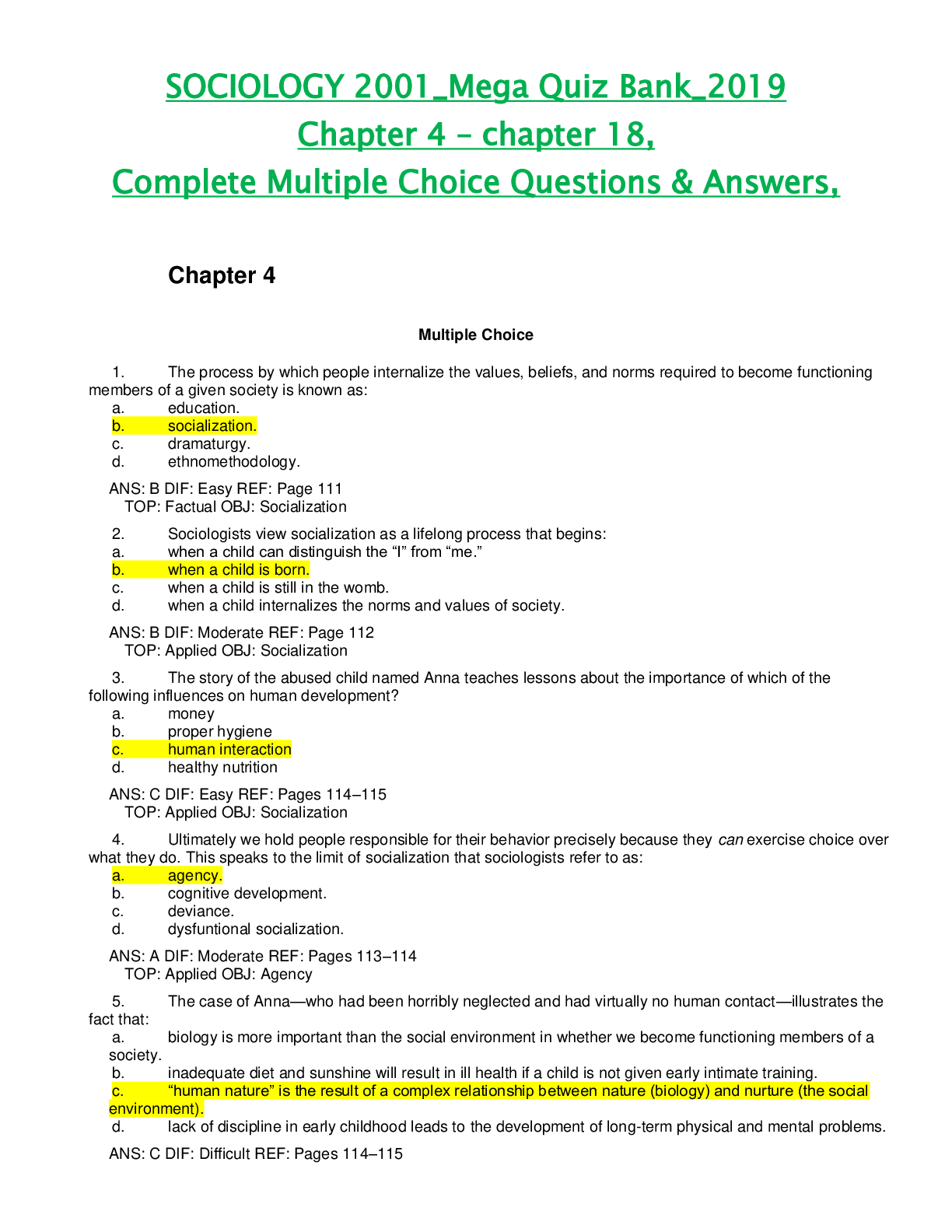
Reviews( 0 )
Document information
Connected school, study & course
About the document
Uploaded On
Jun 09, 2021
Number of pages
248
Written in
Additional information
This document has been written for:
Uploaded
Jun 09, 2021
Downloads
0
Views
87

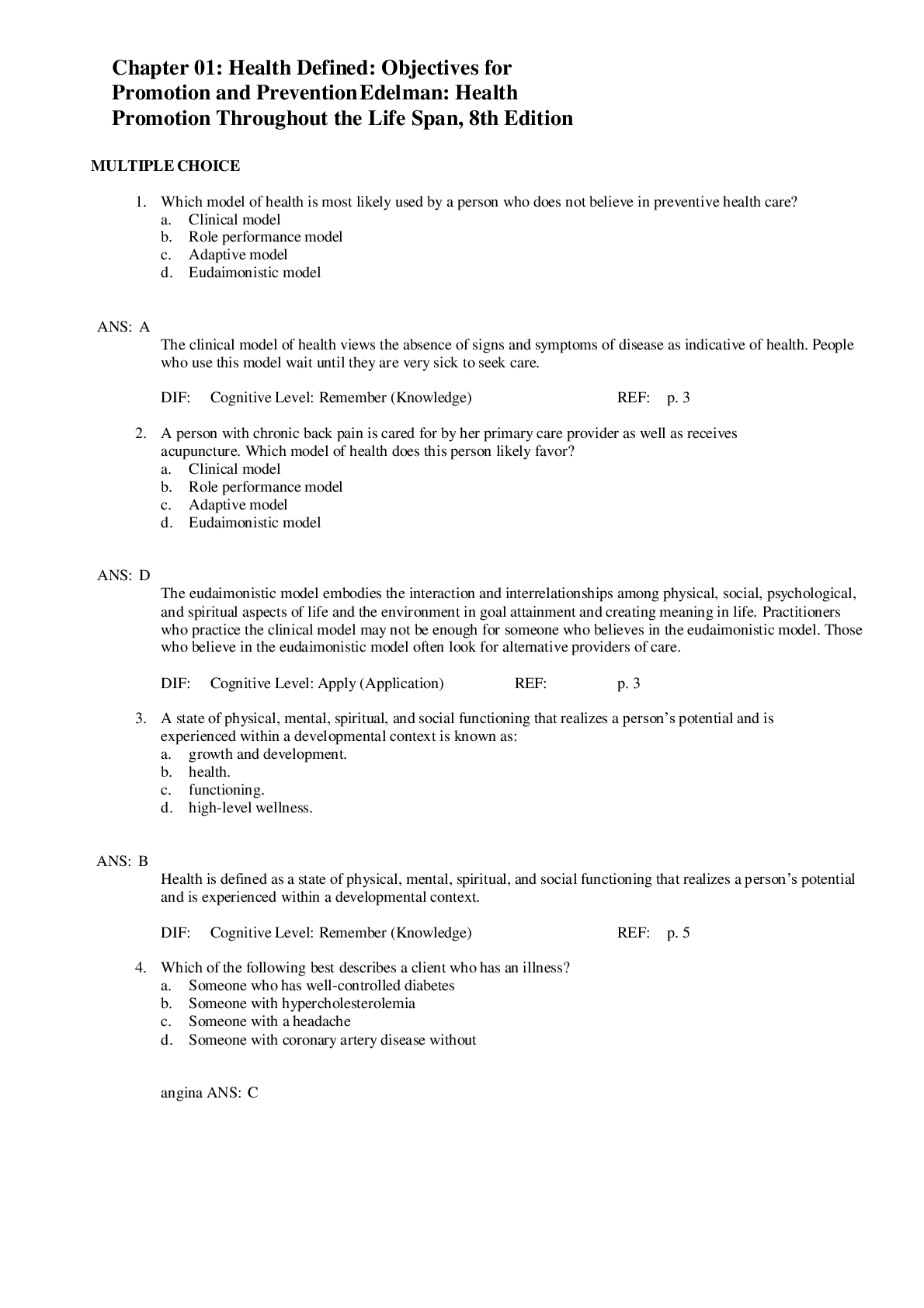

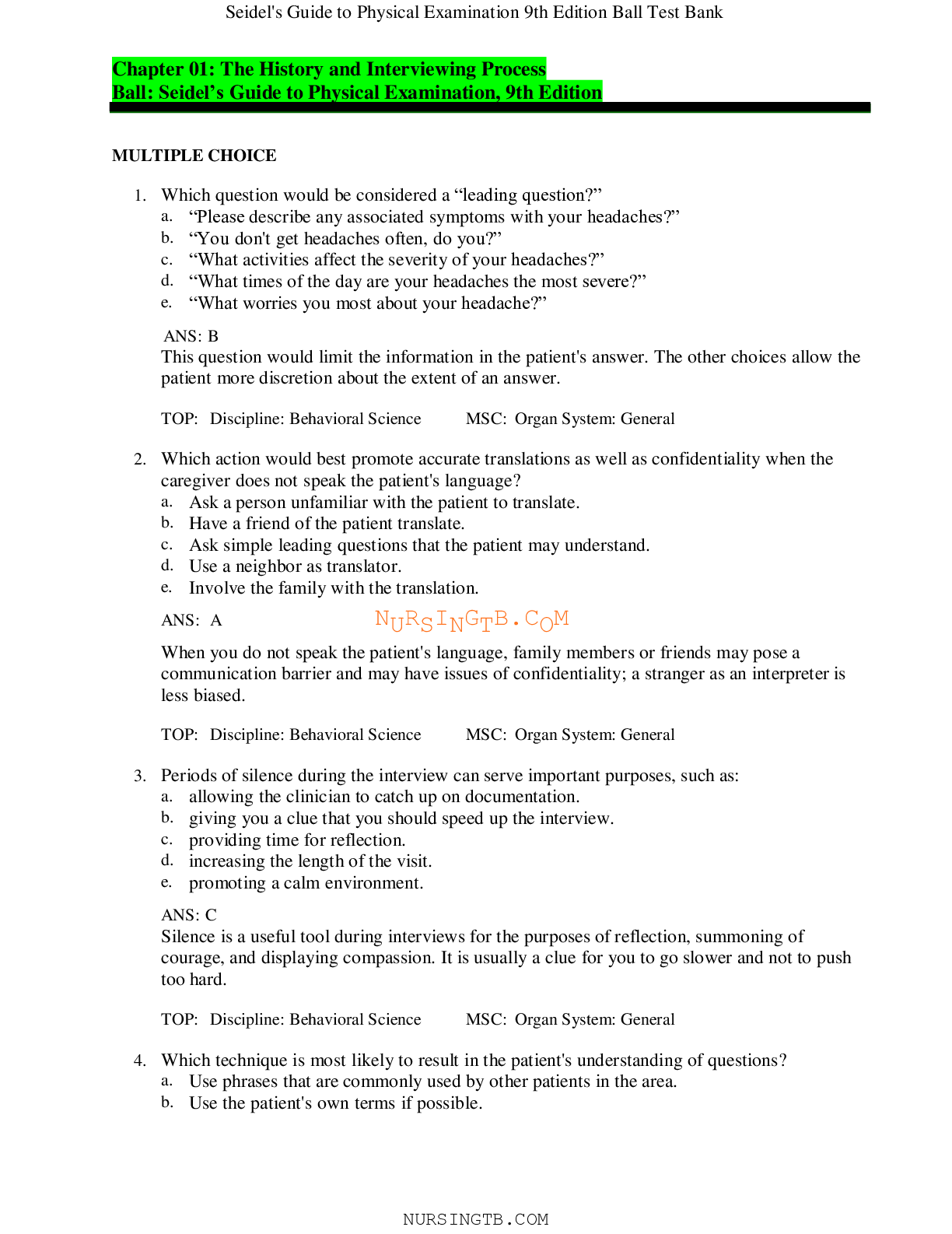
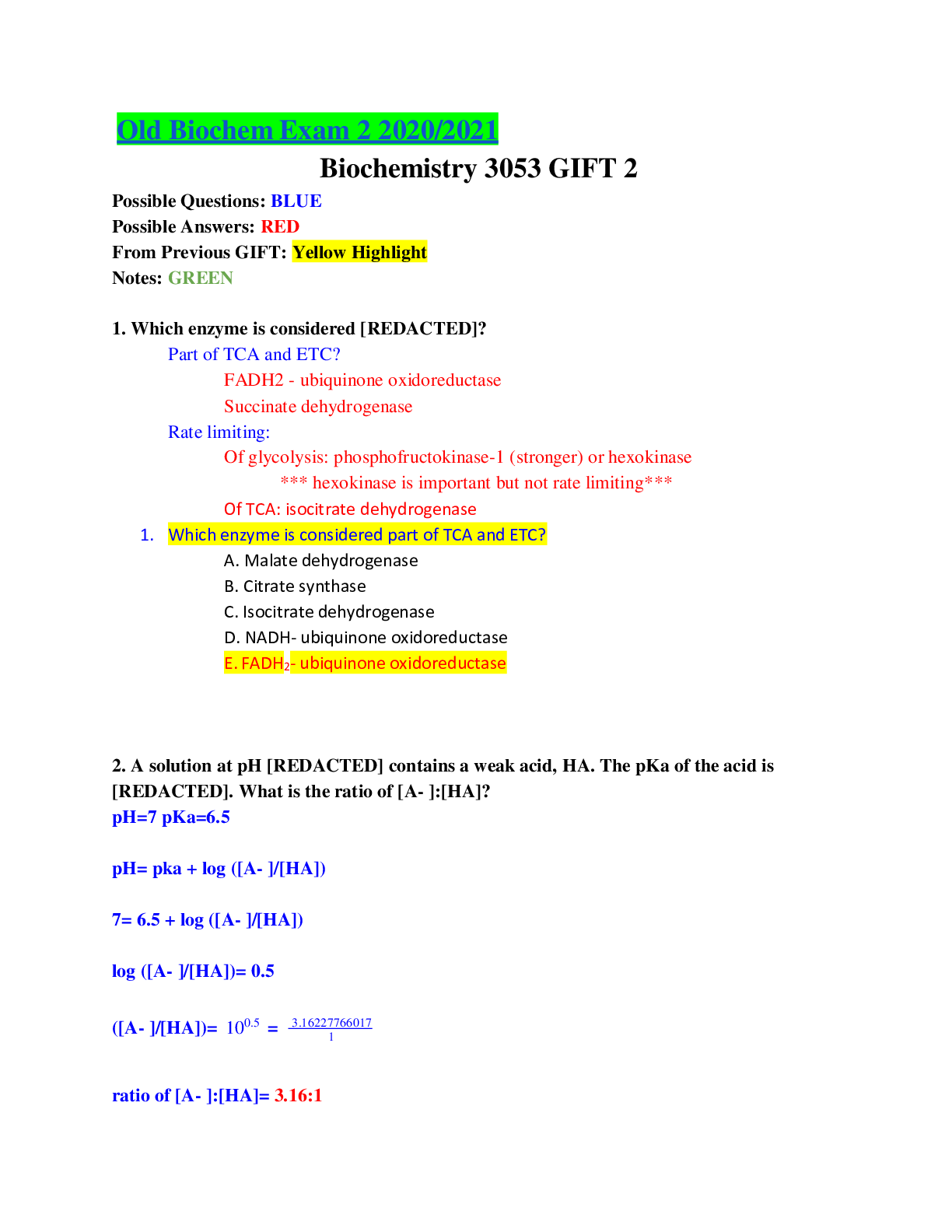
.png)



